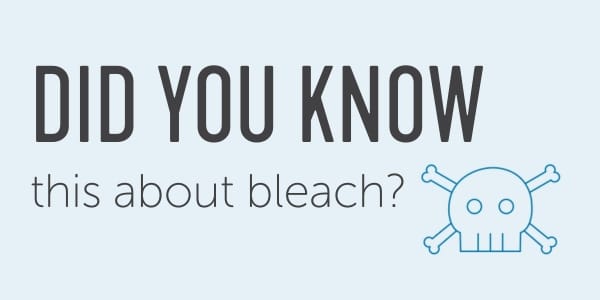 So what is electrolyzed water?
So what is electrolyzed water?
It’s a technology that’s been used for years in the industrial space to create a potent cleaning product and effective disinfecting solution that’s free from the hazards of bleach. For example, hospitals in the United States and Japan use electrolyzed water for its efficacy & gentleness. And it’s commonly used in wound healing products because it’s so gentle and effective. The technology uses an electrical current to change the molecular structure of salt, water, and vinegar into:
- Sodium hydroxide – a common detergent used at different concentrations in everything from skincare to toothpaste.
- Hypochlorous acid – an antimicrobial that’s actually the same substance your white blood cells produce to fight infection and as effective as bleach. Unlike typical cleaners, it’s gentle enough for cleaning things like baby gear & pet toys without needing to rinse. Given how effective it is at killing bacteria and microbes without leaving behind harmful residues, hypochlorous acid is also used for preserving fresh produce. It’s even USDA-approved for use in organic crop production.
Let’s learn more to help us compare hypochlorous acid vs bleach to help you find your ideal household cleaner.
How is electrolyzed water different than bleach?
They are very different! For starters, they have different chemical structures; the formula for sodium hypochlorite is NaOCl & the formula for hypochlorous acid is HOCl.
Hypochlorous acid is the same substance the human body’s white blood cells produce to fight infection. And it’s so gentle it’s used in wound healing products.
When the pH of bleach is lowered (made acidic) the hypochlorite converts to hypochlorous.
Bleach is defined as:
1) Having a pH of 11+,
2) being at a concentration high enough to remove the color from fabric, and
3) 99%+ NaOCl.
None of these apply to hypochlorous acid. An interesting fact is that you need a lot more bleach to achieve the same anti-microbial power as hypochlorous acid. The order of magnitude varies by microbe, but overall HOCl is a much more efficient antimicrobial than bleach, so you don’t need nearly as much. That’s why it’s used in so many industrial applications where gentleness (for example on skin, animals, and produce) is critical.
HOCl vs Bleach – Comparing Uses
Hypochlorous acid (HOCl) uses vary widely due to its potent antimicrobial properties and gentle nature. Unlike bleach, which can be harsh and irritating to the skin and mucous membranes, HOCl is gentle and non-toxic, making it safer for many applications.
Approved by the EPA for combating COVID-19, it has been crucial in disinfection and wound care, dating back to its use in World Wars. HOCl has also been pivotal in ophthalmology, veterinary care, and medical disinfection, especially during the pandemic. In dermatology and skincare, it’s effective against acne and conditions like eczema. Some ways HOCl is used may even surprise you.
Bleach, on the other hand, is used across various settings primarily for its antimicrobial properties.
Its effectiveness in killing germs makes it a popular choice in healthcare facilities, kitchens, and bathrooms, where maintaining a clean and sanitary environment helps prevent the spread of infectious diseases.
Bleach functions as a powerful whitening and stain removal agent, often used in laundry to restore the brightness of fabrics by eliminating stains caused by dirt, food, and other substances.
If electrolyzed water is so great why does anyone use bleach?
Even though electrolyzed water has been around for years, you probably haven’t heard of it because traditionally it required industrial-size equipment costing $10,000+ to make.
Another reason is that hypochlorous acid dissipates over time, like carbonation in a soda. That means the shelf life as a cleaning agent isn’t long enough for electrolyzed water to travel through a typical retail distribution system like conventional cleaners. That’s why our product, Force of Nature, is an appliance that makes electrolyzed water – you make it right on your countertop when you need it to clean and disinfect your home. Making electrolyzed water on demand also means that you don’t need single-use plastic bottles, or the environmental damage from producing, transporting and disposing of all that wasteful plastic.
How Electrolyzed Water Is Made
Making it is pretty simple chemistry (if you’re a white blood cell or Force of Nature of course!). Watch the video below for a quick description of how it works.
When we learned about the electrolyzed water technology, we knew it could be the solution families just like ours were searching for!
Force of Nature is the only EPA-registered disinfectant you can make on your kitchen countertop. It’s a medical-grade disinfectant that kills 99.9% of germs, and is on EPA’s list N, the disinfectants approved for use against SARS-CoV-2, the cause of COVID-19. And good news, the EPA expects all products on List N to kill all strains and variants of SARS-CoV-2. More questions? We’ve got the scoop on how to compare electrolyzed water vs bleach, or about how Force of Nature is safe to use on virtually any surface in your home. Or, learn more about how Force of Nature actually works.




